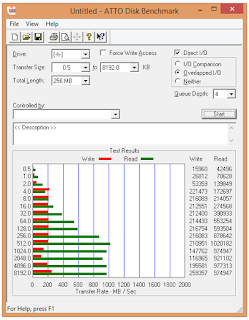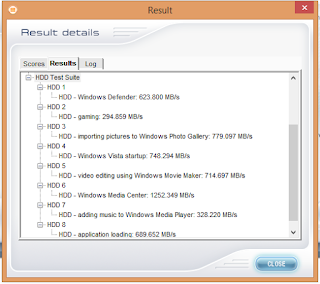ADATA has become quite a household name, well a PC enthusiast house to be precise, when it comes to delivering respectable performance at really competitive price tags. Their catalogue is so rich that you can find almost all kinds of storage devices and memories on their website. All they lacked was a NVMe SSD and they've filled that gap aswell with their latest ADATA SX8000 PCIe M.2 SSD which they launched in Q4 2016 based on the PCIe Gen3x4 interface.
The SX8000 carrying the XPG branding is obviously aimed at gamers who look to break the SATA III speed barriers to gain that extra edge in their gameplay experience. I'm really thankful to ADATA India for lending me one of these drives for review today!
Coming in at capacities ranging from 128GB to a massive 1TB the SX8000 is the first ever SSD in the market today to utilize the IMFT's new 3D MLC NAND, and it's also the first MLC product with LDPC error correction. The 128GB variant carries really low speeds since 3D NAND is not a great choice for low capacity drives but shines bright from the 256GB and above models which also happens to be the sweet spot of SSD storage capacities. Our ADATA SX8000 256GB SSD costs around $130 or Rs 11,300 in India making it the cheapest 256GB NVMe SSD available in the market today!
Packing and Accessories
With the SX8000 M.2 ADATA has brought back their signature XPG packing style with a balck and wine red colored box having an abstract flair in the backdrop. The front clearly specifies the drive capacity, the brand logo and a big product image along with the product name at the bottom left corner.
On the back nothing much is printed except for the product name and vital details such as the various contact details to the ADATA customer care service.
Open the box and you'll find just the SSD securely packed in a plastic retainer. No manual or installation guide is provide along which is acceptable since no one needs it now.
Overall the packing is clean, simple and informative with nothing to complain about.
Closer Look
Looking at the XPG SX8000 you'll notice that its small, I mean like very very small! It complies with the 2280 form factor & hence, measures at just 22mm x 80mm x 3.5mm. Its a good thing since most motherboards only support M.2 drives of upto 80mm in length making the ADATA SX8000 M.2 quite a universally compatible drive.
The top has a black metal heatsink attached to the drive with a prominent XPG logo to add premium aesthetics aswell as cooling to the product.
Since this is a 3D NAND based drive so the bacl colored PCB is bare at the bottom since chips are twice in density over a conventional 2D NAND chip. The top has a controller, DRAM buffer and two 3D NAND chips to complete the package.
The controller over here is the quad channel Silicon Motion SM2260 controller. The SM2260 is designed mainly for client and entry-level enterprise SSDs (in this case, however, a high-end consumer SSD) and features four 8Gbps lanes of simultaneous data flow combined with with eight NAND channels. Other supported features include Low-Density Parity Check Error Code Correction (LDPC ECC), TBW (total bytes written), Data Shaping and even RAID but has no support for AES-256 data encryption.
The 3D MLC NAND on the SX8000 are marked as ADATA but in reality are from Micron model number NW825. Each die has 96GB of storage capacity giving the drive a raw capacity of 288GB in total.
Besides, the SX8000 drive uses a pseudo-SLC caching by dedicating one third of the 384Gbit from the Micron 3D TLC NAND chips creating a large buffer! If its been implemented effectively then we can expect high performance from this drive. A a dedicated 256 MB of DDR3 DRAM cache is also provided to compliment this installation. The module used is the Nanya NT5CC64M16GP-DI IC and is DDR3L-1600 with 11-11-11 timings.
Test Setup and Benchmarks
We used a new test bench to benchmark the ADATA SX8000 256GB NVMe M.2 SSD.CPU: Intel Core i7 7700K 4.2Ghz
Motherboard: MSI Z270 Gaming M7
RAM: Kingston HyperX Predator 8GB DDR4 3000Mhz Memory Kit
Cooler: Corsair H100i GTX Push Pull Configuration
Graphics Card: MSI GTX 1060 Gaming X 6G
Storage: Corsair Neutron GTX 480GB SSD ADATA SX8000 256GB M.2 SSD
Power Supply: Corsair AX860i 860W 80+ Platinum
OS: Windows 8.1 Pro 64-bit
The drive was easy to fit in and installed without a problem. Following our usual SSD testing methods we formatted the drive and put it as a secondary drive with our main SSD loaded with Windows 8.1 Pro 64-bit. The entire test suite was run twice to obtain the best possible reading, each session performed after a fresh system restart. Out of the 256GB promised only 238GB on this drive is usable so around 7% of the total space is reserved for memory buffer.
Crystal Disk Info V7.0.5
Crystal Disk Info is a great tool for displaying the characteristics and health of storage devices. It displays everything from temperatures, to the number of hours the device has been powered, and even to the extent of informing you of the firmware of the device.Crystal Disk Info shows us that a bunch of useful SMART attributes are presented to the end user. Total reads and writes as well as NAND writes are shown. The firmware version we are testing with today is version C2.0.6 with the drive working at optimum temperatures even during summers all thanks to the new black heatsink put onto the drive.
ATTO Disk
ATTO Disk Benchmark measures transfer rates across specific lengths for any storage system. ATTO uses RAW data, I set my transfer size from 0.5 to 8192kb. This is generally the most reliable benchmarks for today's SSDs.As we can see the drive is hitting the exact advertised speed over here with 974Mb/s read speed though 2593Mb/s write speed which is not top of the line performance for a NVMe drive but for the price its best in class!
CrystalDiskMark 5.0.2
CrystalDiskMark is a disk benchmark software that analyses different types of hard drive. Giving sequential benchmark write and read statistics in MB/s. A simple program that is very useful.The read/write speed again can be seen in almost coherence with our previous tests.
Anvil Storage Utility
The next test is Anvil Storage Utilities, which is a really great piece of software. The SSD benchmark gives you scores for both read and write as well as a combined score.Anvil also includes Threaded IO tests, which test IOPS. We ran both the random read and random write tests. The results are below.
AS SSD
The AS SSD software determines the performance of Solid State Drives (SSD). The tool contains five synthetic and three practice tests. The synthetic tests determine the sequential and random read and write performance of the SSD. These tests are performed without using the operating system caches. In Sequential tests, the program measures the time it takes to read and write a 1 GB file respectively.From the images its clear that the SSD not only hits great speeds in the benchmark but also the copy benchmark shows respectable speeds which is something most consumers will be interested in.
AIDA64 Extreme Edition v5.80
AIDA64 is one of the best tools out there to check the system stability, error diagnostics and even to validate overclocking.It has a set of suites for almost every hardware out there including SSD/HDD. So we started of with AIDA64 disk suites.
As we can see that the drive is hitting great speeds but is extremely inconsistent in read and write activities.
HD Tune Pro
HD Tune Pro is one of the most popular hard drive software suites available. It has many different benchmarks and tests built into it. Our first test is the read benchmark, which tests the average read speed and access time of the drive.It was necessary to use it even after so many tests just to give all of you a graph of how constant the speed is on this SSD as many SSDs tend to fluctuate on the read/write speed which ultimately gives you unstable performance.
At 726.1Mb/s average read speed and a very inconsistent graph the drive is definitely performing well but with consistency issues.
PCMark Vantage
We used the PCMark Vantage HDD test which is one of the best range of test suits out there for measuring the performance of any HDD/SSD. Tests are conducted by simulating real life tasks such as Windows Start up, Gaming etc.With 133000 as the total score and minimum speed at 294.859Mb/s in the 'gaming' test the drive comes up with some very impressive stats. This is important since these are emulation of real life usage!
PCMark 8 Professional Edition
PCMark 8 Storage Test unlike PCMark Vantage scores and records the SSD performance through a set of application execution and related tasks such as Adobe Photoshop, Microsoft Office and even through games like Battlefield 3.The test ran for over an hour and we were presented with impressive scores of 4986 and all applications were executed in respectable time frames.
My Verdict
ADATA employed the IMFT's new 3D flash technology for their XPG SX8000 which comes with its own list of merits and demerits. The drive is very fast when it comes to raw performance and can be undoubtedly be used as a boot drive not only for desktops but also for notebooks and ultrabooks due to its universally compatible form factor. The heatsink on the new iteration of the product keeps it cool even under heavy loads erasing the blemish on the initial version that lacked a heatsink & hence ran hot at times.The down side comes in its inconsistency since the Intel 3D MLC is still new and needs future improvement. Hardware encryption isn’t supported as of now, but will be added in future via a firmware update, so that’s something to look for to. But then being backed up by 5 years long warranty & coming in at around Rs 11,000 the drive is the cheapest 256GB NVMe M.2 SSD on the market giving it some solid brownie points especially for those who are on an ultra tight budget!
I highly recommend the ADATA SX8000 256GB NVMe M.2 SSD to everyone who's looking for a storage upgrade from the conventional SATA SSDs & want a boot drive or gaming drive at an extremely competitive price tag.
I give it a 8/10 earning our Gold Award!













































0 comments:
Post a Comment